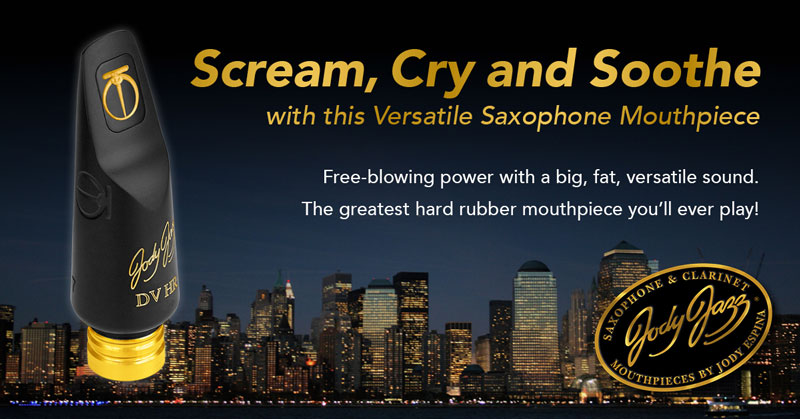BetterSax Gear – Is It Actually Better?

Introduction
Since seeing Jay at NAMM 2025 just a few months ago, Jay and his team were nice enough to send me BetterSax Classic saxophones, BetterSax Burnin’ and Classic mouthpieces, and BetterSax Jazz Reeds for tenor and alto saxophone to further play test. I will be sharing a product overview, my thoughts, and sound clips.
Saxophones
Product Overview
The BetterSax Classic saxophones were designed in an effort to make a saxophone that is ergonomically comfortable for the beginner to advancing saxophonist, easy to play out of the box, and at a price point that many can afford.
Unlike most saxophones within the $799 to $1,499 price point, the BetterSax Classic saxophones showcase many features that you typically find on an intermediate to semi-professional saxophones. The BetterSax Classic has a post to body construction, making it lighter with a faster response. There are also blued steel springs, metal domed resonators, and pisoni leather pads.
In addition, the BetterSax Classic includes a high F# key which historically has been a feature reserved for intermediate to professional level horns. Each BetterSax Classic saxophone comes with the BetterSax Classic mouthpiece which is starter mouthpiece hand-finished in the USA. The cushioned case is lightweight and protective with backpack straps and ample storage space for a neckstrap, reeds, cork grease, swab, and any other accessories.
BetterSax Classic Tenor
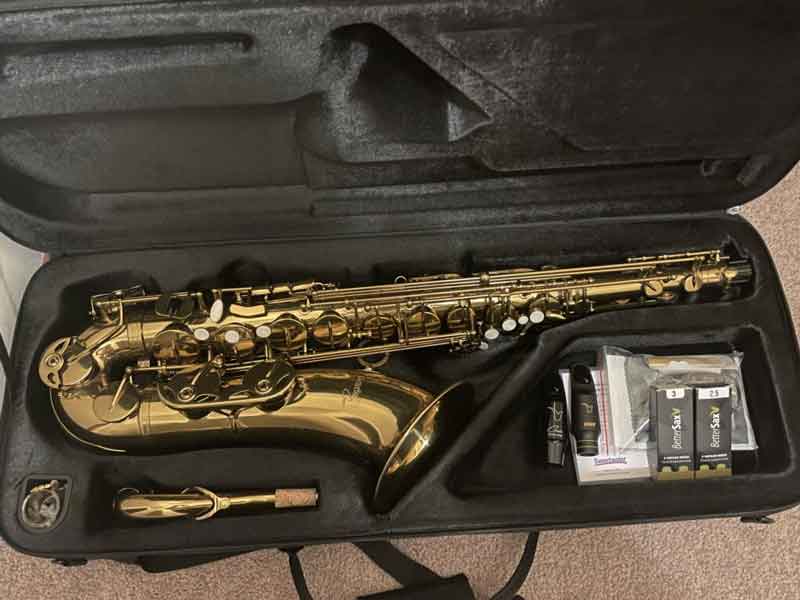
Since trying the BetterSax Classic tenor at NAMM 2025, it has been great to be able to sit down and really take a closer look at its overall construction and playability. Since Jay is distributing the BetterSax Classic saxophones through Sweetwater, I received the tenor (pictured above) with a certificate that a Sweetwater tech further serviced the instrument via their inspection process.
Taking the BetterSax Classic tenor out, I went through the keys to make sure that they were all sealing and that there weren’t any dents, dings, felts, corks, or any other parts missing, which there were not.
In addition, I checked the key-fitting across to make sure there wasn’t any excessive play. Besides some movement with the front F key, everything felt pretty tight. Aesthetically, the BetterSax Classic has a light cognac finish which is reminiscent of vintage saxophones from the past. The finish reminds me of the Selmer BA, SBA, and Mark VI, which I believe is what Jay was looking to achieve.
The key touches are fake mother of pearl with more of a white finish versus a glossy finish, with each pearl being slightly concave versus flat. The overall keys and body layout reminded me of a Selmer Super Action 80 Series II, which is in line with the numerous Chinese and Taiwanese saxophones manufactured today, also based off of that mold.
The BetterSax Classic saxophone neck has the underslung octave mechanism which is reminiscent of the King Super 20, but I believe Jay chose this design as he is a big fan and owns quite a few Yanagisawa saxophones that have the same octave mechanism.
When it came to the engraving, the BetterSax Classic had a light floral engraving that is either machine done or hand-graved, but I believe machine done floral pattern was a nice touch.
The case the BetterSax Classic tenor came arrived in reminded me of the case that comes with the Eastman 52nd Street tenor saxophone, and also looks to be similar case offered by the Jean Paul and Victory Musical instruments. With that being said, the sax fit the case snuggly and there was ample room for accessories as well as separate slots for neck and mouthpiece.
From a build and longevity perspective, I would need to play on the BetterSax Classic tenor for quite some time to really get an idea, but having had a few weeks to play test, I would say that for a saxophone manufactured in China under Jay’s supervision, I am pretty impressed since I have tried various Chinese saxophones that simply don’t hold up.
From a playability perspective, I was able to play from low Bb to High F# at various dynamic levels with overall ease. I found the BetterSax Classic tenor had a pretty immediate response whether I was testing with my Slant Link, the BetterSax Burnin’, or the BetterSax Classic mouthpiece.
Sonically, I found the horn to be quite dynamic in terms of either dark or bright depending on your setup and how you focus your air from pushing hard to sub-toning.
Ergonomically, the BetterSax tenor felt fluid throughout, but I would make some adjustments to the palm keys as I felt the spring tension was a bit tight. The D palm key was a bit further out making the E palm key not as easy to reach when playing faster lines. This could be remedied with a simple key riser, putty, or cork applied by your local repair professional.
I did like how the low B key was slightly lower than the C# key making it easy to roll from C# to C to B, to Bb. I would say that the low Bb key pinky rest could have been a bit bigger for my pinky to rest against, but again, similar to the palm keys, an Oleg attachment, puddy, or slight cork build up would solve my issue.
Intonation wise, the BetterSax did perform well when I went through my overtone series. I did find it took me a little bit of time to adjust in the upper-stack and into the palm keys as the sound went brighter and a little sharp ,but after adjusting my mouthpiece placement on the cork, over the course of the past few weeks, I have been able to get it locked in which, was great to see given that I have played various Chinese saxophones where there is no amount of lipping up or down you can do will get the notes in tune.
Overall
From build quality, intonation, ergonomics, sounds, and overall playability, I do think the BetterSax Classic tenor is one of the “Better” new options within a similar price range. Besides the used market, the only other new saxophones that I recognized within a similar price range were the Jean Paul and Victory lines of saxophones, which I would need to further play test to compare.
With that being said, when it came to a used entry level saxophone, I would typically recommend looking for a used Yamaha 23 as the new Yamaha 26 alto and tenor, from what I could find, are listed in the mid $2,500+, and at that price point you could find some vintage used Yamaha 62 saxophones (in pretty good condition) for that price or not much more.
From a resale perspective, I believe the used Yamaha 23 student saxophone would retain its value better than the BetterSax Classic over time, but for the features and build quality of the BetterSax horns, I think there is still quite a bit of value. In addition, the BetterSax is new and comes with a 2 year manufacturer’s warranty and replacement parts that can be easily sourced.
BetterSax Classic Alto
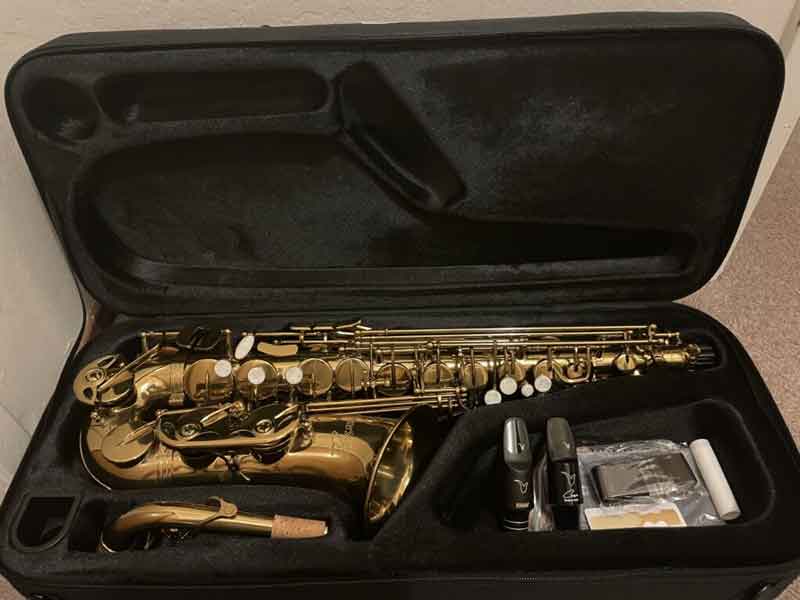
I am much more of a tenor player, but after play testing the BetterSax Classic Tenor, I thought it would be worth taking a deeper dive into the alto.
In terms of ergonomics, finish, parts, etc, the BetterSax Classic alto was quite similar to the tenor, but there are some differences to note. One in particular is the front F key. Unlike the BetterSax Classic tenor which showcases a tear drop front F, the alto actually has the same high F key as you would find on the Yanagisawa W01 line of saxophones. I am not surprised here, since as I mentioned before, Jay is a big Yanagisawa fan so I can see why he’d incorporate similar features into the BetterSax Classic alto.
This front F key is different from the original BetterSax alto which was a tear drop like the tenor and my recommendation here would be for Jay and his team to incorporate the front F key from the alto to the tenor as I found it more comfortable when playing into the altissimo.
Ergonomically, the BetterSax alto felt comfortable throughout, but similarly to the tenor, I would make some adjustments to the palm keys as I felt the spring tension was a bit tight and the D palm key was also a bit further, making the E palm key not as easy to reach when playing in palm keys. Again, with a simple key riser, putty, or cork, my issue would be solved.
Also similar to the tenor, I found that the low Bb key pinky rest could have been slightly more extended for my pinky to rest against and I’d want that Oleg Bb extender attachment, puddy, or slight cork build up would solve this minor inconvenience.
Although it doesn’t affect the overall playability of the alto, I noticed that in comparison to the tenor, the key guard was slightly over the bell to body brace which I have not seen before, as seen in the photo below.
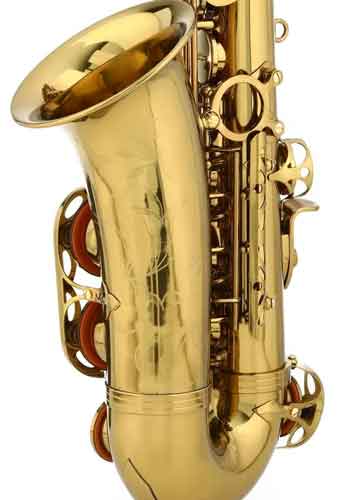
Intonation wise, the BetterSax Classic alto did perform well when I went through my overtone series. However, like my experience with the tenor, I found it took me a little bit of time to adjust in the upper-stack and palm keys as the sound went brighter, and a little sharp. After adjusting my mouthpiece placement on the cork and further playing the horn over the past few weeks, I was able to get it overall locked in and actually have found it quite easy to quickly switch between the BetterSax Classic alto and tenor. Compared to other Chinese horns, playing into the palm keys with good intonation in the altissimo, the BetterSax Classic alto had a clear advantage.
Overall
Similar to the tenor, I do think the BetterSax Classic alto is also one of the “Better” new options within a similar price range. In comparison to the tenor priced at $1,499, the BetterSax Clasic alto is $799, and for $800 dollars, I think the BetterSax Classic alto offers even more value as there aren’t many new options on the market that offers a similar quality horn at the same price point.
With that being said, to get the clearest possible value and quality comparison for this tier of horn, I would need to try the Jean Paul line, as this comes closest in terms of price point. In addition, I still think a used Yamaha 23 alto is a great option as well if you are willing to search the used market and have a good repair person to make adjustments and repairs.
However, if you are looking for a new saxophone that is under $800 dollars with features more commonly found on intermediate and semi-professional saxophones, I think the BetterSax alto saxophone is worth a try, and with the amount saved, you can invest those savings into various online saxophone courses or better yet, towards a private teacher which will make the biggest difference.
Mouthpieces
BetterSax Burnin’ Mouthpieces (7*)
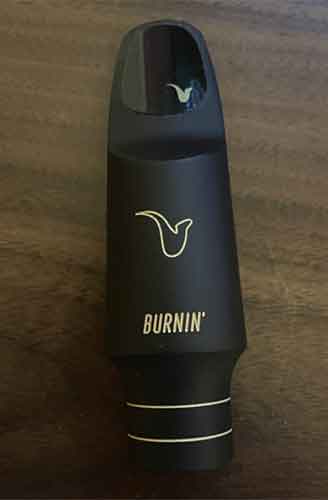
Product Overview
Jay Metcalf partnered with JodyJazz to produce the BetterSax Burnin’ tenor mouthpiece. Each BetterSax Burnin’ mouthpiece is manufactured at the JodyJazz factory and was designed with the following features:
- roll-over baffle
- straight side walls
- thin tip and side rails
- a large chamber
- hand-finishing
The BetterSax Burnin’ tenor mouthpiece comes in three tip openings of 6*, 7*, and 8*. The goal Jay had in mind when designing the BetterSax Burnin’ mouthpiece was to offer a mouthpiece that was very free-blowing, flexible at various dynamic levels, projected, had a solid core throughout the entire range, and could play dark or bright depending on your embouchure and the amount of air used.
Thoughts
When I first saw the BetterSax Burnin’ tenor mouthpiece, I thought it was going to play very similarly to a the JodyJazz HR* or the JodyJazz HR* Custom Dark. After taking a closer look, what I noticed was different in the BetterSax Burnin’ mouthpiece was its rollover baffle, which starts at the tip and then gradually slopes down a bit steeper as you move towards the chamber, but not a step baffle into the chamber. It has a large chamber versus a medium chamber that I have typically seen with other mouthpieces and the large chamber actually reminded me of the V16 T7 large chamber mouthpiece.
I noticed that as you looked through the throat to the bore to the shank, that the bore of the mouthpiece appeared to be larger compared to the chamber. I think the combination of the medium roll-over baffle, straight side walls, thin tip and side rails, and a large chamber is what gives the BetterSax Burnin’ mouthpiece its character.
Response-wise, the BetterSax Burnin’ mouthpiece is very free-blowing with a core being very apparent in comparison to a mouthpiece with more back pressure and spread to the sound. In terms of timbre, you could play either dark or bright, but I did find the darks to be more apparent in the lower stack and the brights to be more apparent in the upper stack.
When it comes to control and articulation, the Burnin’ mouthpiece was easy to articulate, and projected and felt quite “punchy” when you pushed it.
Overall, I really liked how this mouthpiece features a large chamber that allows for a variety of timbres, but also includes a medium roll-over and window design that allows for good projection.
To give you a better idea how the BetterSax Burnin’ mouthpiece sounds in comparison to my current setup, see sound clips below.
BetterSax Classic Tenor + BetterSax Burnin’ Mouthpiece with BG DUO ligature
Lupifaro Platinum tenor + Otto Link Slant Signature Mouthpiece
BetterSax Classic tenor + Otto Link Slant Signature Mouthpiece
BetterSax Classic Mouthpiece – Tenor
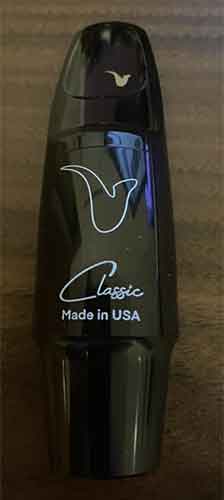
Product Overview
While releasing the BetterSax saxophone and BetterSax Burnin’ mouthpiece line, Jay wanted to offer an affordable mouthpiece to get students off on the right foot. When it comes to beginning student mouthpieces, they gernerally fall into two buckets – either a used or new very cheap plastic mouthpiece that is not very well made and hard to play, or a Yamaha 4C which overall is a pretty popular stock mouthpiece that comes with new Yamaha student saxophones.
With that being said, Jay collaborated with mouthpiece manufacture JJ Babbitt (well known for producing the Otto Link and Meyer line of mouthpieces to name a few brands) to produce the BetterSax Classic mouthpiece for alto and tenor.
The BetterSax Classic mouthpieces are made in the USA and, according to the website, leveraging “injection molding using the same type of plastic you find in surgical equipment and then hand finished by the staff at JJ Babbitt.” Jay’s goal was to offer a mouthpiece that is easy to play, reed-friendly, consistency in tip, rails, table, and facing curve, and finally a mouthpiece that a student can play on while developing their embouchure to prepare them for a more advanced-level mouthpiece. The tenor BetterSax Classic comes in a 0.088″ tip opening.
Thoughts
In terms of timbre, I found the BetterSax Classic tenor mouthpiece to play in the “middle of the road”, being neither too bright nor too dark. The Classic responded well from bottom to top, from piano to forte, and made it easy to articulate and play in tune.
Projection-wise, I did find the Classic was definitely more closed than my current setup or the BetterSax Burnin’ mouthpiece, but that could be due to the 0.088″ tip opening being more closed than I am used to.
The tip, rails, table, and facing curve looked consistent on the one I tried, but to be fair, I would need to see a group of five to ten to further test play the consistency. However, for a student mouthpiece around $49.99, it was definitely of better quality than many of the mouthpieces you would find in a student saxophone case.
In terms of reeds, I tried the BetterSax Jazz Cut and D’Addario Select Jazz reeds and both played well. If you are starting out and do not have a decent student mouthpiece that came with your saxophone, I would recommend checking out the BetterSax Classic mouthpiece. Although I still like the Yamah 4C, I do prefer the BetterSax overall due to it versatility which allows it to work for both jazz and classical playing.
Sound Clips
BetterSax Classic Tenor with BetterSax Classic tenor mouthpiece BG DUO ligature
BetterSax Burnin’ Mouthpieces 6
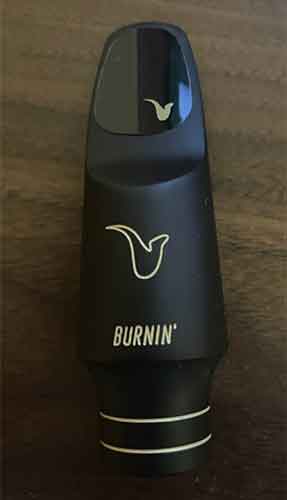
Product Overview
Similar to the BetterSax Burnin’ tenor mouthpiece, the BetterSax Burnin’ alto mouthpiece has many of the same characteristics from design, tip, rails, window, chamber, material etc. The BetterSax Burnin’ alto in comparison to the tenor is offered in a 5, 6, and 7 tip opening.
Thoughts
Similar to the BetterSax Burnin’ tenor, I thought the BetterSax Burnin’ alto was going to be Jay’s version of a modern Meyer or Brilhart or a modified version of JodyJazz’s HR*. I was sent a BetterSax Burnin’ in a 6 tip opening as that is what I am most comfortable playing coming from modern Meyers and “vintage” Meyer copies.
After playing the BetterSax Burnin’ alto mouthpiece, I was surprised as this was not completely just another Meyer or modified version of other alto mouthpieces on the market today. What most stood out to be is the BetterSax Burnin’ mouthpiece was versatile from top to bottom and could play dark or bright depending on how much air you used.
I believe with the larger chamber this gave me more flexibility to shape the sound to my preference. If you are looking for an alto mouthpiece with a more spread versus focused sound, than I wouldn’t recommend the BetterSax Burnin’ alto mouthpiece since the sound is quite direct and punchy based on the medium roll-over baffle.
Overall, I was really happy with the response, flexibility, and feel, as it was easy to play, produced a full sound, made articulation easy, and played in tune throughout the entire range.
With that being said, if you are looking for a more traditional mouthpiece such as a standard Meyer or something that may have more back-pressure or resistance, then the BetterSax Burnin’ mouthpiece is not for you. On the other hand, if you want a mouthpiece that has aspects of a Meyer, but also more flexibility due to the facing curve, large chamber, etc, then the BetterSax Burnin’ alto mouthpiece is an option to consider especially falling under the $250 price range. See sound clips below to get an idea.
Sound Clips
BetterSax Classic Alto with BetterSax Burnin’ 6 mouthpiece + Versa X Ligature
BetterSax Classic Alto with Phil Tone “Meyer 6M” + Versa X Ligature
BetterSax Classic Mouthpiece – Alto
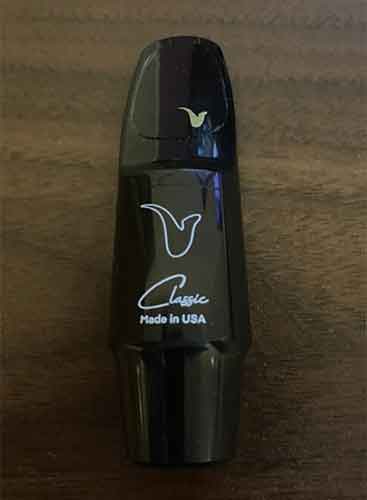
Product Overview
Just like he BetterSax Classic tenor mouthpiece, the BetterSax Classic alto mouthpiece is manufactured by JJ Babbitt by leveraging the same manufacturing process resulting in a mouthpiece that is easy to play, reed friendly, has consistent tip, rails, table and facing curve. Unlike the BetterSax Classic tenor, the alto comes in a 0.070″ tip opening.
Thoughts
The BetterSax alto mouthpieces are remeniscent of the Selmer C* in terms of projection and sound, but easier to play at various dynamic levels, especially in the upper stack. The BetterSax Classic alto was free blowing, but similar to the tenor I found the tip opening to be a little small and projection-wise, the sound felt more contained and felt limited when I tried to really push alot of air and further shape the sound. However, that’s to be expected from just about any beginner mouthpiece.
Sonically, I found the alto similar to the tenor in that it had a “middle of the road” sound that wasn’t too dark or too bright, and I was actually quite surprised by the ease of playing around the entire range of the instrument with a full sound and good intonation with relatively little adjustment.
Articulation at various dynamic levels is another plus. I tried a few different reeds and actually liked the pairing of the BetterSax Jazz Cut 2.5 as the cut and responsiveness of the reed suited this mouthpiece well.
Overall, I did enjoy playing the BetterSax Classic alto mouthpiece. Although I prefer the BetterSax Burnin’ and my personal Phil Tone mouthpiece, I see what Jay was after. I believe the BetterSax Classic alto mouthpiece retails for $39.99 so if you are in the market for picking up a beginner mouthpiece and are between a Yamaha 4C, BetterSax Classic, or another starting mouthpiece, I would definitely take a look at the BetterSax Classic alto mouthpiece as for the value it provides. It should more than get you through your beginning saxophone journey.
BetterSax Classic Alto with BetterSax Classic alto mouthpiece + Versa X Ligature
Reeds
Product Overview
Along with the BetterSax line of saxophones, mouthpieces, and accessories, Jay has also added his own line of reeds to the lineup. The BetterSax reeds are in made in a partnership with Marca reeds, which is based in France.
Jay has worked with Marca to create his own unique cut, and the reeds are organic meaning, there is no fertilizers or pesticides used when growing the cane. In addition, the packaging for the box and sleeves is made out of cardboard, so there is no plastic or cellophane involved in the packaging.
BetterSax Jazz Cut Reeds 2.5 & 3.0 – Tenor & Alto Reeds
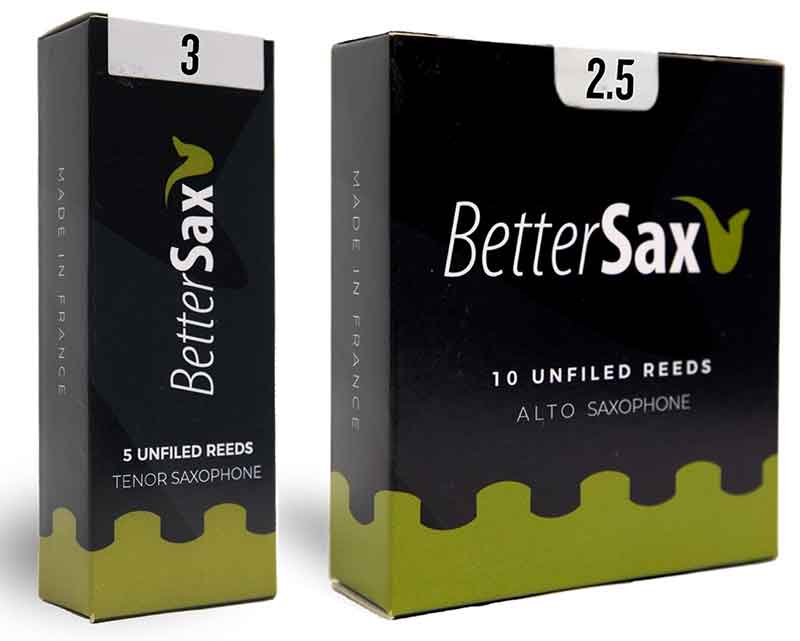
Thoughts
I have tried in array of reed brands from D’Addario, Vandoren, Rigotti, Ishimori, Roberto’s Winds, Boston Sax Shop, Lupifaro, and Marca for traditional cane. As far as synthetics, I’ve tried Legere and Forestone among others.
When I first received the BetterSax Jazz Cut Reeds, I thought they were another new reed cut in partnership with Rigotti Reeds, who supply many boutique brands with their cane. So it was a bit of surprise to learn that Jay has been working with Marca to produce his line of reeds and that he also came up with his own cut.
For tenor, I tried the 2.5 and 3.0 strength and ended up preferring the 2.5. When I opened the box, I checked each reed and didn’t notice any imperfections, chips, splits, or any other flaws. I played through each 2.5 strength Jazz cut reed and found them to be all be playable but there were two that I found to play on the harder side and two in particular that were a tad softer.
The Jazz cut reminded me of the D’Addario Select Jazz but with a bit more buzz in the sound throughout the entire range of the horn, and seemed a tad brighter in comparison to other cuts such as a V16 or Boston Sax Shop reeds, which I believe have a thicker heart and tend to play a tad darker in my personal opinion.
Similar to the tenor, I found the BetterSax Jazz Cut alto reeds to sound and play quite similarly. Again, I preferred the 2.5 strength. Now, in terms of every reed being a great reed out of the box, I simply don’t think that really exists with cane. I did find a little bit better consistency with the box of BetterSax Jazz Cut alto reeds in comparison to the tenor, but I would need to play through multiple boxes overtime to truly rate the consistency.
If you like Jay’s mouthpieces, saxophones, and other accessories and are interested in trying some new options for reeds, I’d recommend you check out the BetterSax Jazz Cut. Overall, I did like the reeds but still prefer for my setup with the D’Addario Select Jazz as well as Boston Sax Shop Black Label reeds.
Final Thoughts
I want to thank Jay, his team, and Sweetwater for sending me the BetterSax line of products to play test and compare. Overall, I have to say that I’ve really enjoyed the BetterSax Classic saxophones, mouthpieces, and Jazz Cut reeds. I think Jay has released a line of products that appeal to a variety of players and budgets.
The BetterSax Classic saxophone is a great option that won’t break the bank if you are looking to begin playing saxophone or are looking for a fairly inexpensive back-up that has some more attention to quality and setup versus the other saxophones manufactured in China.
The BetterSax Classic mouthpiece is quite affordable, works great with the BetterSax Classic saxophones, and is superior to just about any stock mouthpieces you’d get with a new horn, along with being a very viable alternative to the Yamaha 4C. It projects and cuts, and with its design and large chamber, many players will definitely enjoy it if they are looking for something different for under $300 dollars.
Finally, the BetterSax Jazz Cut reeds cut were enjoyable to play test on alto and tenor saxophone, and are of similar quality to the other many brands of reeds I have in my practice room.
With that all being said, although I liked the BetterSax Burnin’ mouthpiece, I am still going to stick with my Slant Link and have a few other mouthpieces that I prefer in terms of the overall core, projection, and cut.
When it comes to the BetterSax Classic saxophones, overall, I enjoyed the alto more than the tenor in terms of playability and setup. I would put a The BetterSax Classic against what is arguably the most popular student horn out there – the Yamaha 23, also a very solid horn. Although the Yamaha will likely hold its resale value a bit more, with the significantly less expensive BetterSax Classic saxophone, you get more updated mechanism and features that are seen on intermediate to semi-professional horns. Even if the BetterSax Classic saxophone were to depreciate by 50% over two to three years of playing, that is far less expensive than going out and renting an instrument.
If the BetterSax Classic was around when I started playing, I would have strongly considered buying one as it would have been much less expensive than renting and would have come with the BetterSax Classic mouthpiece which was much better than the stock mouthpiece that came with my Selmer student alto.
Finally, I liked the BetterSax Jazz Cut Reeds, but in terms of consistency and playability, I found the BetterSax Jazz Cut reeds unfortunately run into the same issue many reed brands have with traditional cane, and this is just something we cane players have to deal with. The good news is we can use a reed knife, sand paper, or the BetterSax Geeklet reed tool to try and make so-so reeds much more playable.
Again, I would like to thank Jay and team for sending me his line of products and am looking forward to checking out the BetterSax ligature once it’s released, not to mention the other products Jay has in store for the future.


